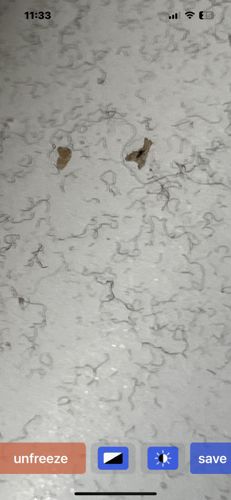Threadworm, Nematode
Scientific Name: Various species within the Phylum Nematoda
Order & Family: Nematoda (Phylum), various orders and families
Size: Typically microscopic, ranging from less than 1 mm to several centimeters, but often very thin. The ones in the image appear to be small, likely a few millimeters in length.

Natural Habitat
The image appears to show them on a moist surface, possibly indicating they are free-living nematodes. They thrive in moist soil, freshwater, marine environments, and decaying organic material. Some species are endoparasitic.
Diet & Feeding
Most threadworms are free-living and feed on bacteria, fungi, algae, and decaying organic matter in soil or water. Some are parasitic.
Behavior Patterns
Threadworms move in a serpentine or undulating manner. They are typically found in moist environments and might be seen aggregating in masses.
Risks & Benefits
Free-living nematodes are crucial decomposers in ecosystems, aiding nutrient recycling. Some are beneficial as biological control agents against insect pests. However, parasitic nematodes can cause significant diseases in plants, animals, and humans (e.g., pinworms, hookworms), but the ones in the image do not appear to be parasitic to humans.
Identified on: 8/31/2025